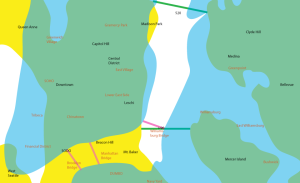Using site-based research, our program in New York City focuses on the multifaceted concept of “urban change” as it intersects with three major sets of themes and questions:
- First, the ideas of place-formation, place-attachment, and preservation (i.e. whose vision of the neighborhood should be protected for the future, and how does this reflect on or express the identity of the communities who live and work there?)
- Second, the question of economic development and “progress” (how is power distributed politically, economically, and socially with regards to change?)
- Third, the notion of everyday experience as key to our understanding of what it means to live in an ever-changing city (how is change or flux a part of our daily lives, and how do our surroundings enable or hinder our ability to deal with change?)
Through field trips, readings, meetings with local scholars, archivists, students, and architects, and by pursuing their own place-based projects, students will engage with the numerous ways that New York City has dealt — and continues to grapple with — change over the last century and a half. Our program will partner with the City College of New York, the Center for Urban Pedagogy, and the New York Historical Society to allow students to dialogue with experts and other students in the field of urban studies in New York.
Our program is sponsored by the Comparative History of Ideas Program at the University of Washington, Seattle.

